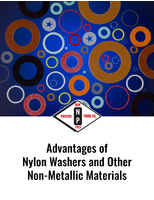Proposed ASTM Antimicrobial Activity Guide focuses on textiles.
Press Release Summary:
Proposed standard ASTM WK31901, Test Methods and Practices for Evaluating Antibacterial Activity on Textiles, will help test laboratories, manufacturers, and retailers understand which standards for antimicrobial treated textiles is best for specific situations. Standard provides index of procedures in form of test methods, practices, and related documents used in textile industry for determining antibacterial properties of antimicrobial-treated textile articles.
Original Press Release:
Proposed ASTM Standard to Provide Guide for Antimicrobial Activity on Textiles
A proposed new ASTM International standard will aid test laboratories, manufacturers and retailers in understanding which of an array of available standards for antimicrobial treated textiles is best for a given situation.
Antimicrobial agents are commonly used to control bacterial growth and unwanted odor on textiles. ASTM WK31901, Test Methods and Practices for Evaluating Antibacterial Activity on Textiles, will provide users with an index of procedures in the form of test methods, practices and related documents currently used in the textile industry for determining the antibacterial properties of antimicrobial-treated textile articles.
“Antimicrobial treated textiles have been in the market for 30 years and many test methods exist that can be used to quantitatively and qualitatively measure performance,” says Robert A. Monticello, Ph.D., senior scientific consultant, International Antimicrobial Council, and an ASTM member. “Choosing the correct method is extremely difficult as one needs to understand the type of active ingredient that is used and the intended end use.”
Monticello notes that currently existing methods are useful, but not in every situation, with methods needing to be modified for each particular enduse and bioactive material. ASTM WK31901 will provide directions for modifying current test methods.
“The modifications may be intended to more closely reflect the enduse scenarios of the treated product, such as towels or athletic wear, or may be needed in order to perform fast, reliable quality control bioassays” says Monticello. “Each of these modifications are generally accepted practices in the industry and currently used by many testing laboratories.”
According to Monticello, recent advances in the delivery of the active antibacterial ingredient on textiles has allowed much lower levels of antimicrobial agents to be applied to surfaces, while still demonstrating anti-odor protection.
“With lower active ingredients being used, other opportunities for such treated products are being developed,” says Monticello. “Test methods need to be modified to accommodate these new technologies that may have different modes of action or have different enduse expectations.”
ASTM WK31901 is being developed by Subcommittee E35.15 on Antimicrobial Agents, part of ASTM International Committee E35 on Pesticides, Antimicrobials and Alternative Control Agents.
To purchase ASTM standards, visit www.astm.org and search by the standard designation, or contact ASTM Customer Relations (phone: 877-909-ASTM;Â sales@astm.org). ASTM International welcomes participation in the development of its standards. For more information on becoming an ASTM member, visit www.astm.org/JOIN.
For more news in this sector, visit www.astm.org/sn-chemicals or follow us on Twitter @ASTMChemicals.
ASTM Committee E35 Next Meeting: Oct. 69, 2014, October Committee Week, New Orleans, La.
Technical Contact: Robert A. Monticello, Ph.D., International Antimicrobial Council, Washington, D.C., Phone: 202-600-7711; ramphd@amcouncil.org
ASTM Staff Contact: Jennifer Rodgers, Phone: 610-832-9694; jrodgers@astm.org
ASTM PR Contact: Barbara Schindler, Phone: 610-832-9603; bschindl@astm.org



